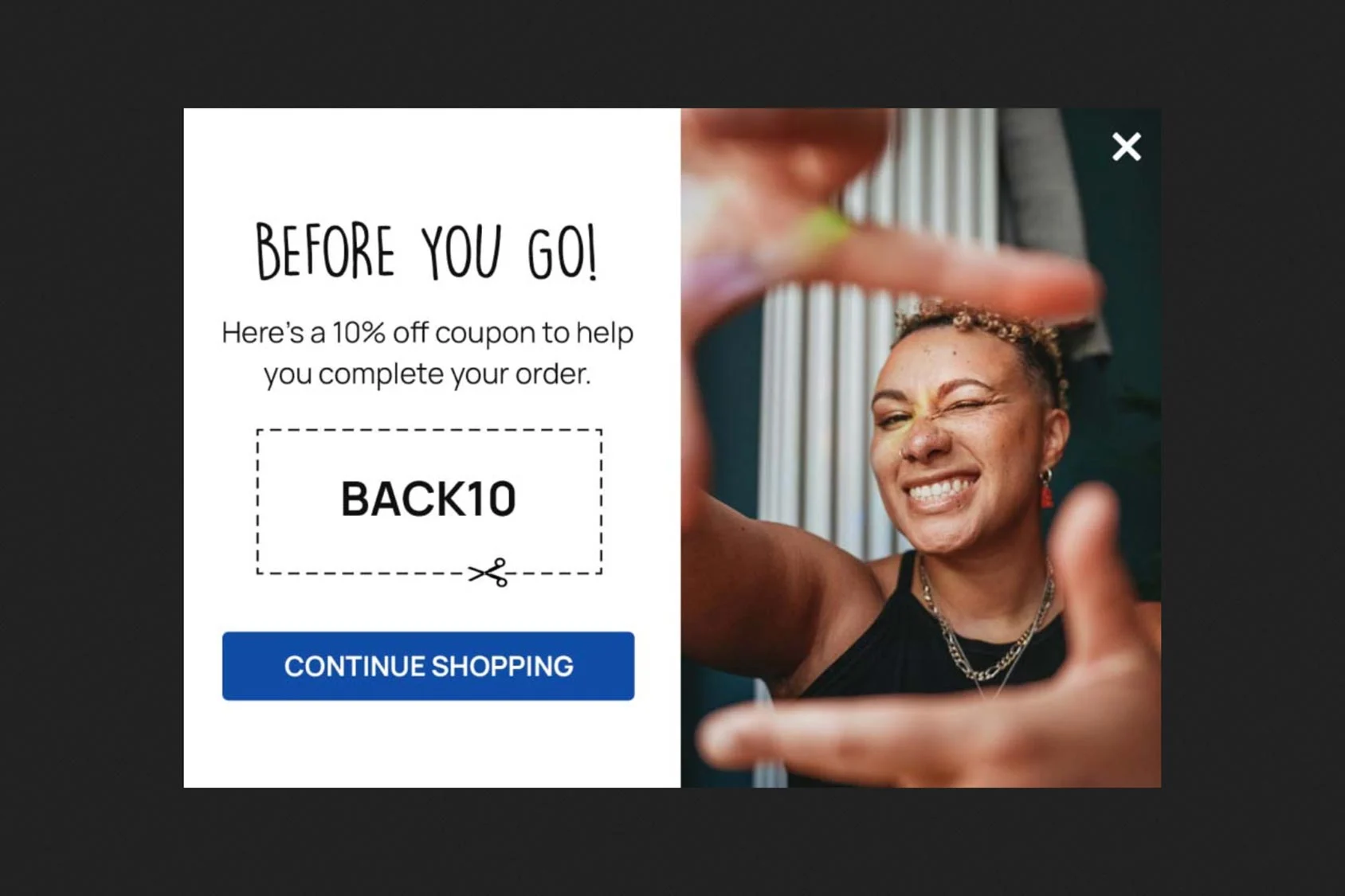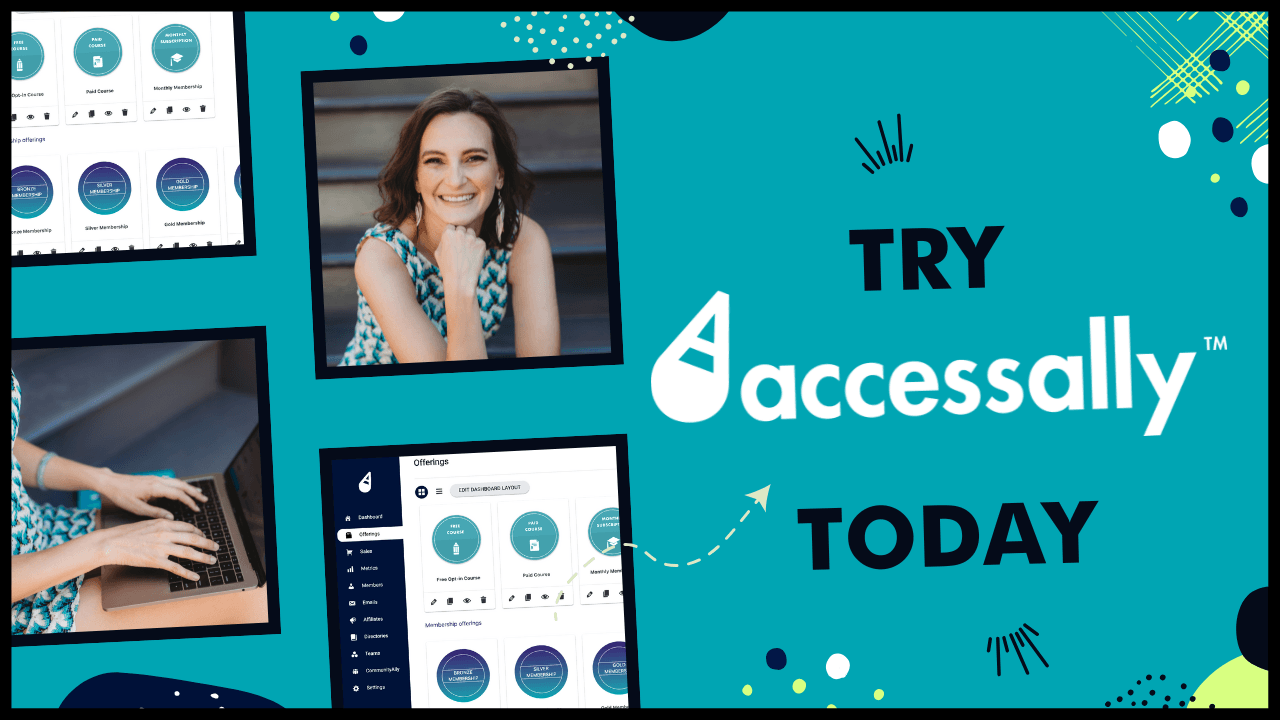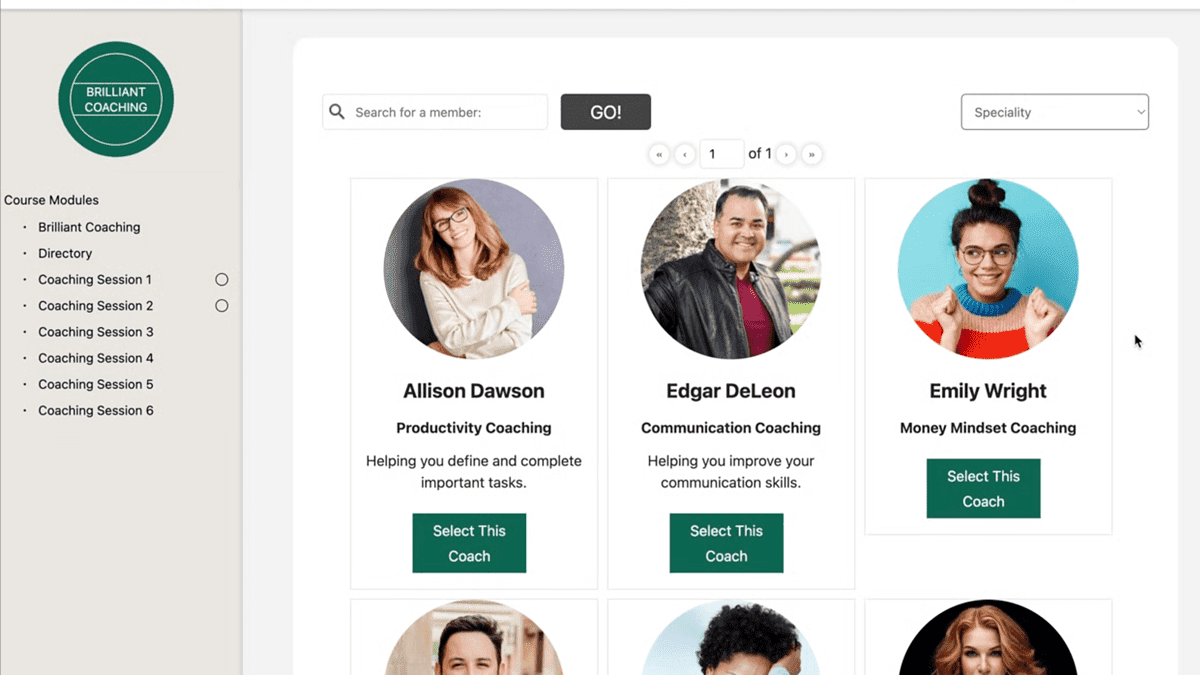Introduction and Overview: Mastering Email Popup Strategy
Let’s talk about popups – those small but mighty windows that can either make your visitors smile or send them running. When done right, pop-up forms are incredibly powerful tools for growing your email list and connecting with potential students. But finding that sweet spot between effective and intrusive requires careful strategy and thoughtful implementation.
Think of your popup strategy like hosting a dinner party. You wouldn’t greet guests at the door by immediately asking them to commit to your next three gatherings. Instead, you’d welcome them in, let them get comfortable, and engage in meaningful conversation before extending future invitations. The same principle applies to your website visitors – timing and context are everything.
Unfortunately, many course creators jump straight to aggressive popup tactics, bombarding visitors with offers before they’ve had a chance to explore the value of their content. This approach typically results in high bounce rates and missed opportunities for genuine connection. The key is to develop a popup strategy that enhances rather than interrupts the user experience.
Consider this: the average website visitor makes a judgment about whether to stay or leave within the first 15 seconds. This means your initial popup timing needs to be precisely calibrated to catch them at the right moment – not too early to be annoying, but not so late that they’ve already decided to leave. The most successful popup strategies I’ve seen combine smart timing with compelling offers that genuinely align with visitor interests.
Throughout my years of working with course creators, I’ve identified several critical factors that contribute to popup success: strategic timing, value-driven offers, contextual relevance, and design coherence. Each of these elements plays a crucial role in converting casual browsers into engaged subscribers. The most effective popup campaigns I’ve analyzed typically show conversion rates between 3-7%, with some reaching as high as 10% when all elements are perfectly aligned.
In this comprehensive guide, we’ll explore each of these factors in detail, examining real-world examples and providing practical implementation strategies you can start using today. We’ll also look at common pitfalls to avoid and how to measure your popup performance effectively. Whether you’re just starting with popups or looking to optimize your existing strategy, you’ll find actionable insights to improve your email capture rates while maintaining a positive user experience.
Foundation Concepts and Planning for Popup Success
Before diving into popup implementation, we need to establish solid foundations that will guide your email capture strategy. When done right, popups can be powerful tools for growing your course membership, but they require thoughtful planning to avoid alienating potential students.
First, let’s address timing and frequency. Your popup strategy should align with your visitor’s journey through your site. Consider implementing a first-time visitor popup that appears after 30-45 seconds of engagement – this gives users enough time to understand your value proposition. For returning visitors, adjust the timing to appear either immediately (if they’ve shown previous interest) or after they’ve viewed multiple pages.


The context of your popup is equally crucial. Rather than displaying the same generic popup across your entire site, segment your approach based on content categories. For example, if a visitor is reading about course creation, your popup should offer a lead magnet specifically related to course development or teaching methodologies. This contextual relevance can double or even triple your conversion rates.
Design psychology plays a vital role in popup effectiveness. Use contrasting colors for your call-to-action buttons, but ensure they complement your brand palette. Keep your copy concise and benefit-focused – ideally, your main value proposition should be readable within 2-3 seconds. Include a clear, compelling headline that addresses a specific pain point or desire of your target audience.
Mobile optimization cannot be an afterthought. With over 50% of web traffic coming from mobile devices, your popups must be mobile-first in design. This means larger touch targets, simplified forms (two fields maximum for mobile), and ensuring your popup doesn’t cover more than 30% of the screen on smaller devices.
Exit-intent popups deserve special attention in your strategy. These typically convert at higher rates because they catch visitors at a crucial decision point. However, the messaging needs to be particularly compelling – consider offering your best lead magnet or a time-sensitive discount to create urgency.
Testing and iteration are fundamental to popup success. Start by A/B testing different elements: headlines, images, timing, and offer types. But don’t just test randomly – create a structured testing calendar where you focus on one element at a time. Track not just conversion rates but also bounce rates and time on site to ensure your popups aren’t negatively impacting overall user experience.
Remember to respect your visitors’ choices. Include clear opt-out options and honor their preferences. A subtle “Don’t show this again” checkbox can go a long way in building trust. Additionally, implement frequency caps to prevent popup fatigue – typically, limiting displays to once every 7 days for returning visitors who haven’t converted is a good starting point.
Step-by-Step Implementation Guide for Popup Optimization
When done right, popup strategies can transform your email capture rates without frustrating your visitors. Let’s walk through a comprehensive implementation process that balances effectiveness with user experience.
Start by auditing your current website traffic patterns. Use your analytics tools to identify peak engagement times and the pages where visitors spend the most time. These insights will help you determine optimal timing for your popups. For example, if visitors typically spend 2-3 minutes on your course description pages, consider triggering a popup at the 90-second mark when they’re most engaged.
Next, craft your popup design with intention. Keep your color scheme consistent with your brand, but make the call-to-action button stand out. I recommend using a contrasting color that still fits your palette. Your popup should occupy no more than 30% of the screen on desktop and 50% on mobile to maintain a non-intrusive presence.
The messaging in your popup is crucial for conversion. Lead with a clear value proposition that speaks directly to your visitor’s needs. Instead of saying “Join our newsletter,” try something like “Get weekly course creation templates delivered to your inbox.” Be specific about what they’ll receive and how it will benefit them.
Implement smart triggering rules based on user behavior. Consider using exit-intent popups for desktop users who show signs of leaving your site. For mobile users, where exit-intent technology isn’t as effective, set time-based triggers after 30-45 seconds of engagement. Always include scroll-depth triggers for long-form content pages, activating when visitors reach 50-70% of the page.
Segment your popup strategy based on visitor type. First-time visitors should see different offers than returning visitors. For instance, new visitors might receive a free course module, while returning visitors get offered a limited-time discount on your full course. Use your email marketing platform’s tracking capabilities to ensure visitors don’t see the same popup twice.
Test your forms rigorously before launch. Ensure they work flawlessly across all devices and browsers. Keep form fields to a minimum – name and email are often sufficient for initial capture. Each additional field typically reduces conversion rates by 10-15%, so choose your required information wisely.
Monitor and optimize continuously. Set up A/B tests for different elements: timing, design, copy, and offers. Run each test for at least two weeks or 1,000 visitors to gather statistically significant data. Pay special attention to both conversion rates and bounce rates to ensure your popups aren’t driving visitors away.
Finally, establish a clear success metric framework. Track not just email captures but also the quality of leads generated. A 5% conversion rate with engaged subscribers is more valuable than a 10% rate with unresponsive ones. Review these metrics monthly and adjust your strategy accordingly to maintain optimal performance.
Advanced Strategies and Techniques for Popup Optimization
Let’s dive deep into sophisticated popup strategies that go beyond basic timing and placement. When done right, your popup approach should feel less like an interruption and more like a natural extension of your visitor’s journey through your course platform.
First, consider implementing what I call the “value-first sequence.” Instead of immediately asking for an email, show visitors valuable content snippets from your course. For example, if you’re teaching photography, display a before-and-after image transformation, then trigger your popup with a promise to reveal the exact technique used. This creates genuine curiosity and increases conversion rates substantially.
Exit-intent popups remain powerful, but let’s enhance them with behavioral targeting. Track which course pages visitors spend the most time on and customize your popup offer accordingly. If someone lingers on your advanced photography lighting module preview, your exit popup should offer a lighting cheat sheet rather than a generic course overview.
Consider implementing a multi-step popup strategy. Rather than asking for an email immediately, start with an engaging question related to your course topic. For instance, “What’s your biggest challenge with online course creation?” Follow this with 2-3 clickable options, then present your lead magnet as a solution to their specific challenge. This approach can increase conversion rates by up to 30% by creating personal investment.
Mobile optimization deserves special attention, as over 60% of email signups now happen on mobile devices. Design your popups with thumb-friendly buttons and minimize form fields to reduce friction. Consider using a two-stage mobile popup where the first stage is just a small banner at the bottom of the screen that expands only when tapped.
A/B testing is crucial for optimization, but focus on testing one element at a time. Start with your headline, then move to your offer, timing, and design. For a detailed approach to testing and optimization, check out our guide on creating a winning content strategy that applies to popup planning as well.
Leverage scarcity and urgency ethically. Instead of fake countdown timers, offer genuine limited-time bonuses or early-bird access to new course modules. This creates authentic motivation while maintaining trust with your audience.
Finally, implement what I call the “second-chance strategy.” For visitors who close your popup without converting, wait 48 hours before showing a different variation with a modified offer. This respects their initial decision while providing another opportunity to capture their interest when they might be more receptive.
Common Challenges and Solutions in Popup Strategy
When implementing popup strategies for email capture, course creators often encounter several challenging roadblocks that can impact their conversion rates. Unfortunately, many creators fall into the trap of showing popups too frequently or at inappropriate moments, leading to visitor frustration and decreased engagement. Let’s explore these common challenges and their practical solutions.
The first major hurdle is timing – showing your popup too early can feel aggressive and interruptive. Instead of triggering popups immediately upon page load, implement a delay of 30-45 seconds or use exit-intent technology. This gives visitors time to engage with your content and better understand the value you’re offering before presenting your email capture form.
Another significant challenge is creating compelling offers that actually convert. Generic lead magnets like “Subscribe to our newsletter” simply don’t cut it anymore. Focus on developing specific, high-value resources that directly address your audience’s pain points. For example, if you’re selling a course on digital marketing, offer a free template bundle of social media graphics or a comprehensive content calendar template.
Mobile optimization remains a persistent challenge for many course creators. Popups that look perfect on desktop can become intrusive and difficult to close on mobile devices. Ensure your popups are responsive and easily dismissible on all screen sizes. Consider using smaller, less intrusive formats for mobile users, such as bottom bars or slide-ins.
Many course creators struggle with popup frequency and targeting. Bombarding visitors with multiple popups creates a negative user experience. Instead, implement a cookie-based system that remembers when users have dismissed or accepted your offer. Set reasonable intervals between popup displays – typically 7-14 days for returning visitors who haven’t converted.
The visual design of your popup can make or break its success. While it’s important to grab attention, overly flashy or aggressive designs can appear spammy. Strike a balance with clean, professional designs that match your brand aesthetics. Use contrasting colors for your call-to-action buttons, but keep the overall design consistent with your website’s theme.
Finally, tracking and optimization pose challenges for many course creators. Without proper analytics, it’s difficult to know what’s working. Implement A/B testing for different popup elements – from timing and triggers to copy and design. Track not just conversion rates but also bounce rates and time on page to ensure your popup strategy isn’t negatively impacting overall site performance.
Best Practices and Optimization
When it comes to popup optimization, timing and context are absolutely everything. I’ve found that showing popups too early can feel aggressive, while waiting too long might mean missing engaged visitors. The sweet spot typically lies between 30-45 seconds after a visitor lands on your page, giving them enough time to absorb your initial content without losing their attention.
One of the most effective strategies I’ve seen is implementing exit-intent popups with a compelling lead magnet. When done right, these can convert up to 5-10% of departing visitors into email subscribers. The key is to offer something immediately valuable – think quick-win templates, mini-courses, or solution-focused checklists that address your audience’s pressing needs.
Mobile optimization deserves special attention since over 60% of web traffic comes from mobile devices. Your popups should be designed with a mobile-first mindset, featuring larger touch targets, simplified forms, and content that doesn’t overwhelm smaller screens. Consider using bottom bars instead of full-screen popups on mobile – they’re less intrusive while maintaining visibility.
A/B testing is non-negotiable for popup optimization. Test different elements systematically: headlines, imagery, timing, trigger events, and form fields. I recommend running each test for at least two weeks or 1,000 visitors to gather statistically significant data. Pay special attention to your value proposition – it should clearly communicate the benefit of subscribing in 5-7 words.
The follow-through is just as important as the capture. Once you’ve collected those email addresses, have an engaging welcome sequence ready to go. This is where many course creators stumble – they focus solely on collection without planning the next steps. Consider creating a microlearning sequence to immediately showcase your teaching style and expertise. You can learn more about this approach in our guide on how to create microlearning courses.
Remember to respect your visitors’ experience above all else. If someone dismisses your popup, don’t show it again for at least 7 days. Additionally, implement smart triggers that recognize returning visitors and show them different, perhaps more targeted offers. The goal is to build a relationship, not just grow your list at any cost. By following these optimization strategies while maintaining user experience, you’ll find the sweet spot between effective email capture and respectful marketing practices.
| Plan | Features | Best For |
|---|---|---|
| Starter | Basic course creation | New course creators |
| Professional | Advanced features + integrations | Growing businesses |
| Enterprise | Full customization + support | Large organizations |
Case Studies and Examples: Real-World Popup Success Stories
Let’s dive into some fascinating real-world examples that showcase how different businesses have mastered their popup strategies. When done right, popup optimization can transform your email capture rates while maintaining a positive user experience.
Take Sarah’s online yoga studio, for instance. She initially struggled with a generic popup that appeared immediately upon site entry, converting at just 1.2%. After analyzing user behavior, she implemented a trigger-based popup that activated when visitors watched 50% of her free sample class. This contextual timing boosted her conversion rate to 7.8%, as visitors had already experienced value before being prompted to subscribe.
Another compelling example comes from Marcus, a digital marketing instructor. His exit-intent popup was performing adequately at 3% conversion, but he noticed mobile users were particularly resistant. He created a mobile-specific variant that appeared after users scrolled 70% through his blog posts, using a smaller format and simplified design. This targeted approach increased mobile conversions to 5.4% while maintaining desktop performance.
For comprehensive guidance on course creation platforms, see this detailed analysis from WPBeginner Training Course Showcase.
The Language Learning Academy provides an excellent case study in segmentation. Instead of using a one-size-fits-all popup, they implemented language-specific offers based on the course pages visitors were browsing. Spanish learners received different incentives than French learners, resulting in a 62% increase in overall signup rates.
Consider Emma’s membership site for professional photographers. She struggled with popup fatigue until implementing a strategic frequency cap – showing popups no more than once every 7 days to returning visitors. Combined with seasonal offers and portfolio-specific lead magnets, her email list grew by 43% in three months.
A particularly innovative approach came from The Culinary Institute’s online platform. They introduced a quiz-style popup that asked visitors about their cooking experience and goals. This interactive element not only captured emails but also provided valuable segmentation data, achieving an impressive 12% conversion rate.
The most surprising success story is from a meditation app’s website. Instead of traditional popups, they used a subtle slide-in that appeared after users spent 2 minutes on their mindfulness blog posts. This gentle approach, aligned with their brand values, resulted in a sustainable 8.9% conversion rate and significantly lower bounce rates compared to their previous aggressive popup strategy.
| Feature | AccessAlly | Alternative |
|---|---|---|
| Course Creation | ✅ Advanced drag-drop builder | ❌ Basic editor only |
| Member Management | ✅ Built-in CRM system | ❌ Requires third-party tools |
| Payment Processing | ✅ Multiple gateways supported | ❌ Limited options |
| Integration | ✅ WordPress native | ❌ External platform |
These examples demonstrate that successful popup implementation requires a deep understanding of your audience, careful timing, and continuous optimization. The key takeaway is that personalization and context awareness consistently outperform generic, timing-based approaches.
Frequently Asked Questions
What’s the optimal timing for displaying email capture popups?
I recommend triggering popups after visitors have engaged with your content for at least 30-45 seconds, showing clear interest in your material. For exit-intent popups, combine them with a compelling lead magnet specifically tailored to your course topic. Remember to A/B test different timing triggers to find what works best for your specific audience.
How can I make my popup offers more compelling?
Focus on creating a high-value lead magnet that solves an immediate problem for your target audience – think quick wins and actionable resources. I’ve found that offering a focused “mini-training” or valuable template converts significantly better than generic newsletter signups. Make sure your popup copy emphasizes the specific benefit they’ll receive rather than just what they’re getting.
How frequently should I show popups to returning visitors?
For returning visitors who haven’t converted, I suggest setting a cookie to delay repeated popups for at least 7 days to avoid frustration. Consider creating different popup offers for returning visitors that acknowledge their previous engagement with your site. This personalized approach typically yields higher conversion rates while maintaining a positive user experience.
What elements should I include in my popup design?
Keep your popup design clean and focused with a clear headline, compelling benefit-driven copy, and a single call-to-action button in a contrasting color. I always recommend including a professional image (either of yourself or your lead magnet) and using no more than 2-3 form fields to reduce friction. Make sure your close button is easily visible to maintain trust with your visitors.
Future Considerations and Conclusion
As we look ahead at popup optimization strategies, it’s crucial to recognize that user expectations and digital behaviors continue to evolve. When done right, your popup strategy should adapt alongside these changes, incorporating new technologies and respecting emerging privacy standards. Consider implementing AI-powered timing algorithms that learn from your visitors’ behavior patterns to determine the optimal moment for popup displays.
Mobile optimization will become even more critical in the coming years. Your popup design should automatically adjust not just for screen size, but for different user contexts. For instance, a visitor browsing on their phone during their morning commute might respond better to a minimal, single-field form compared to someone on a desktop during work hours.
Privacy regulations and cookie policies are becoming stricter globally. Future-proof your email capture strategy by being transparent about data collection and usage. Consider implementing progressive profiling, where you gather information gradually through multiple interactions rather than requesting everything at once. This approach typically yields higher-quality leads and better long-term engagement rates.
Analytics and testing will remain fundamental to success. Beyond basic A/B testing, consider implementing multivariate testing that examines multiple elements simultaneously. Track not just conversion rates, but also how popup-generated leads perform throughout your entire sales funnel. Are they more or less likely to become paying customers? Do they engage differently with your content?
Remember that popup strategies aren’t just about technical optimization – they’re about creating meaningful connections with potential customers. Focus on delivering genuine value through your popups, whether through exclusive content, personalized recommendations, or special offers that truly resonate with your audience’s needs.
As you implement these strategies, maintain a balance between aggressive growth goals and user experience. Monitor your bounce rates and user feedback carefully. If you notice negative trends, be prepared to adjust your approach quickly. The most successful popup strategies are those that remain flexible and responsive to both user behavior and business needs while maintaining a clear focus on providing value at every interaction point.



